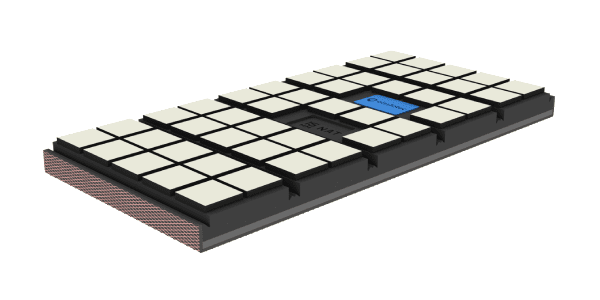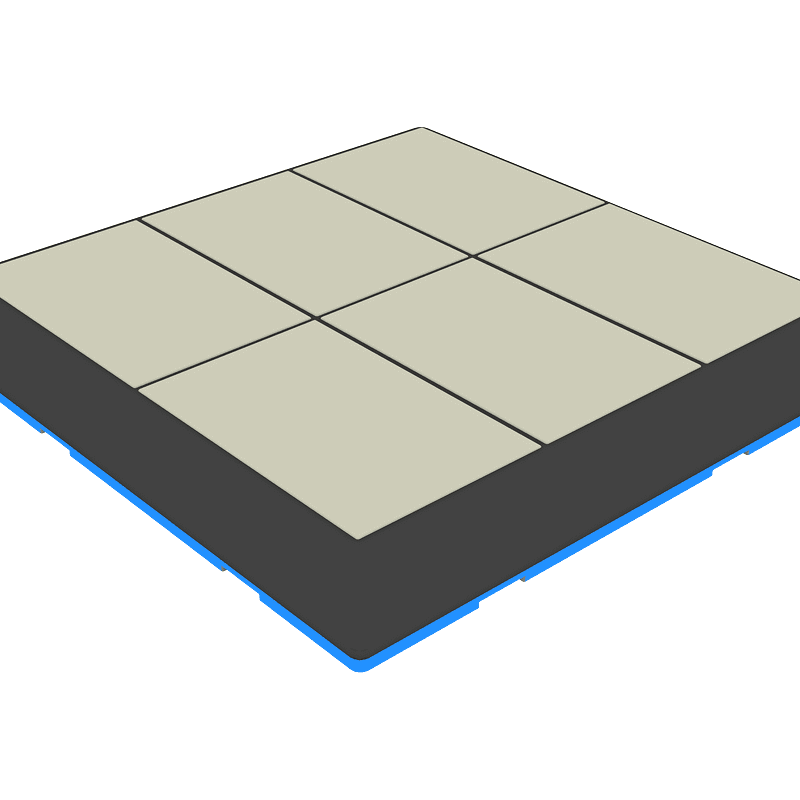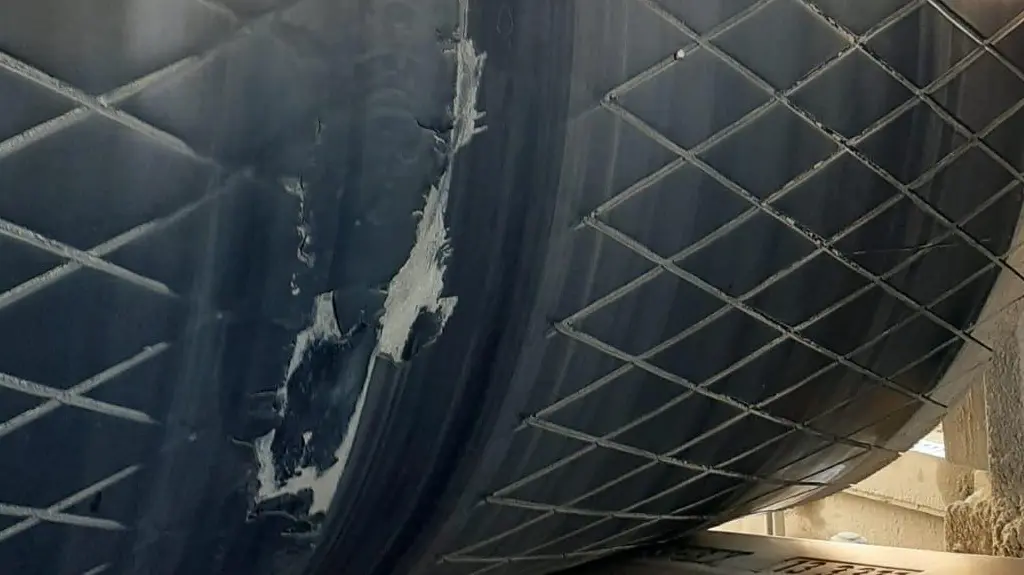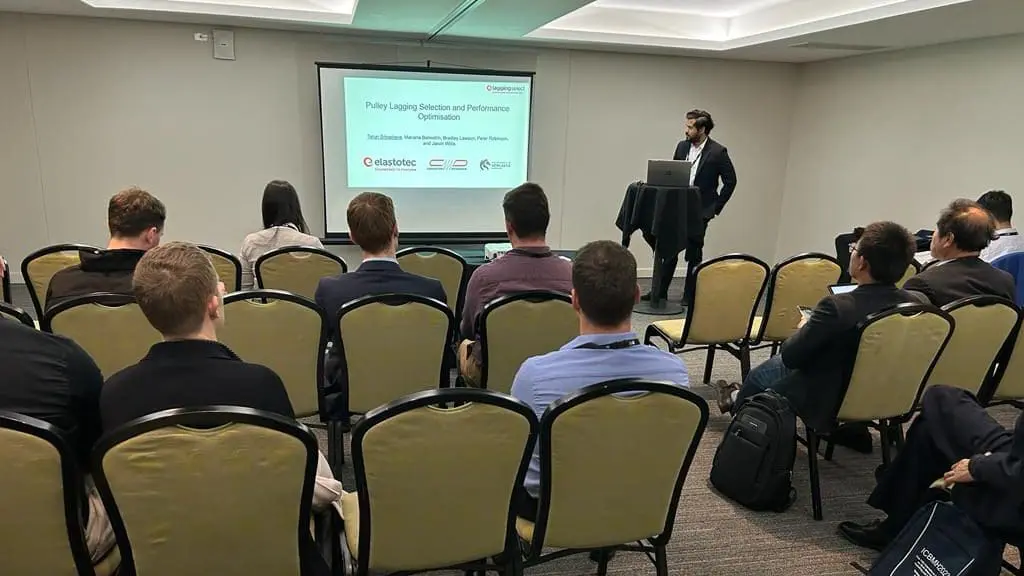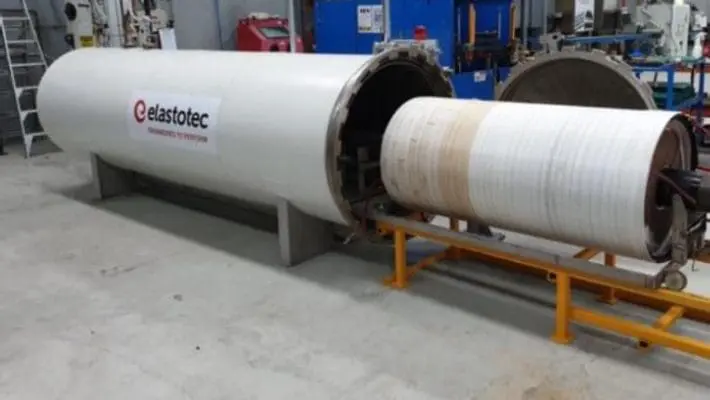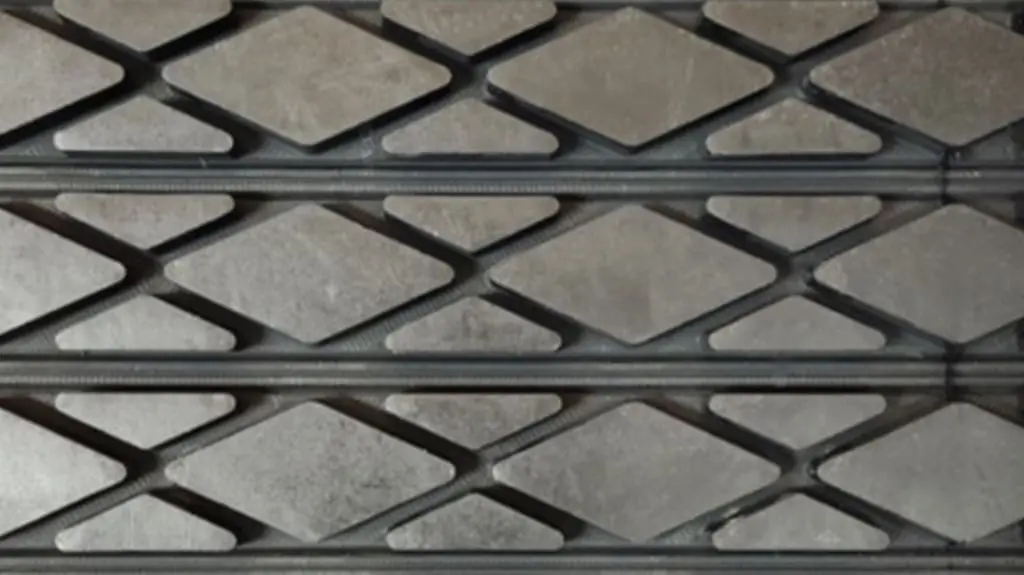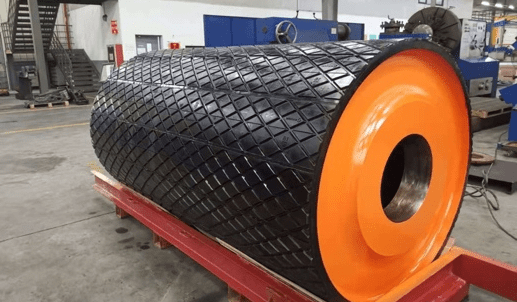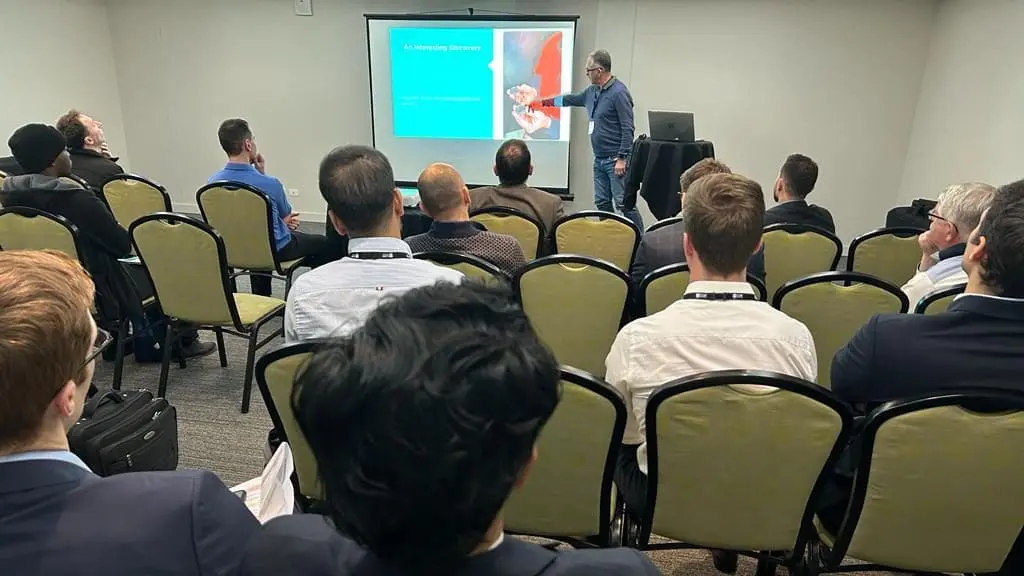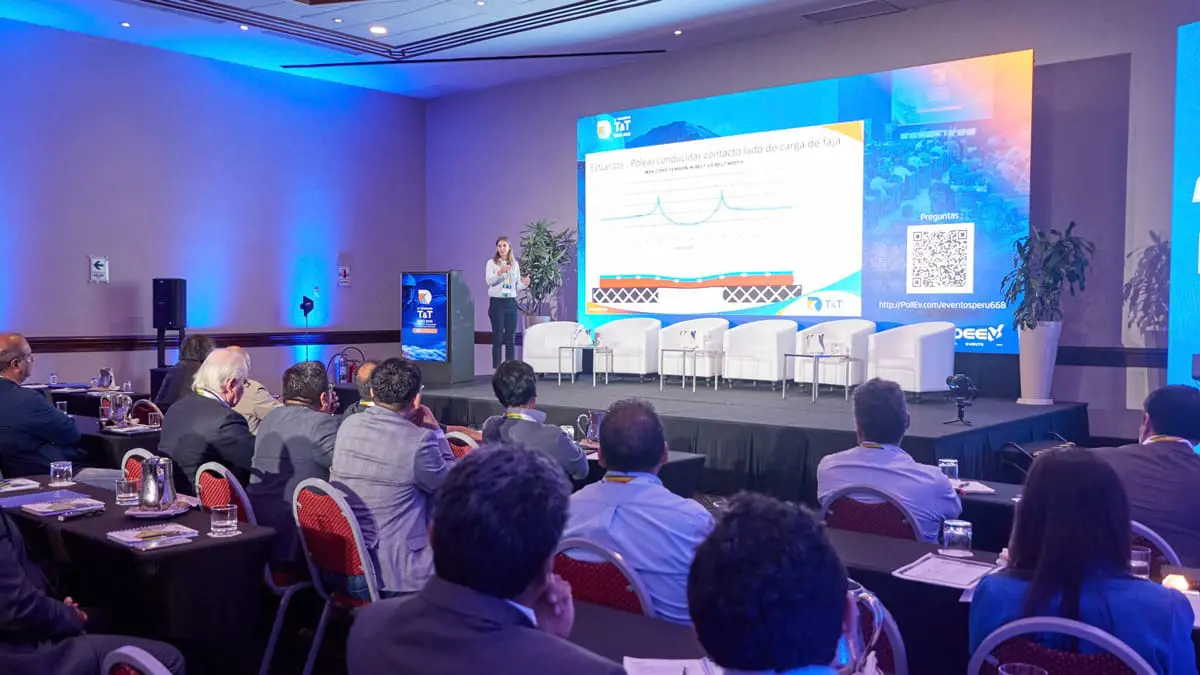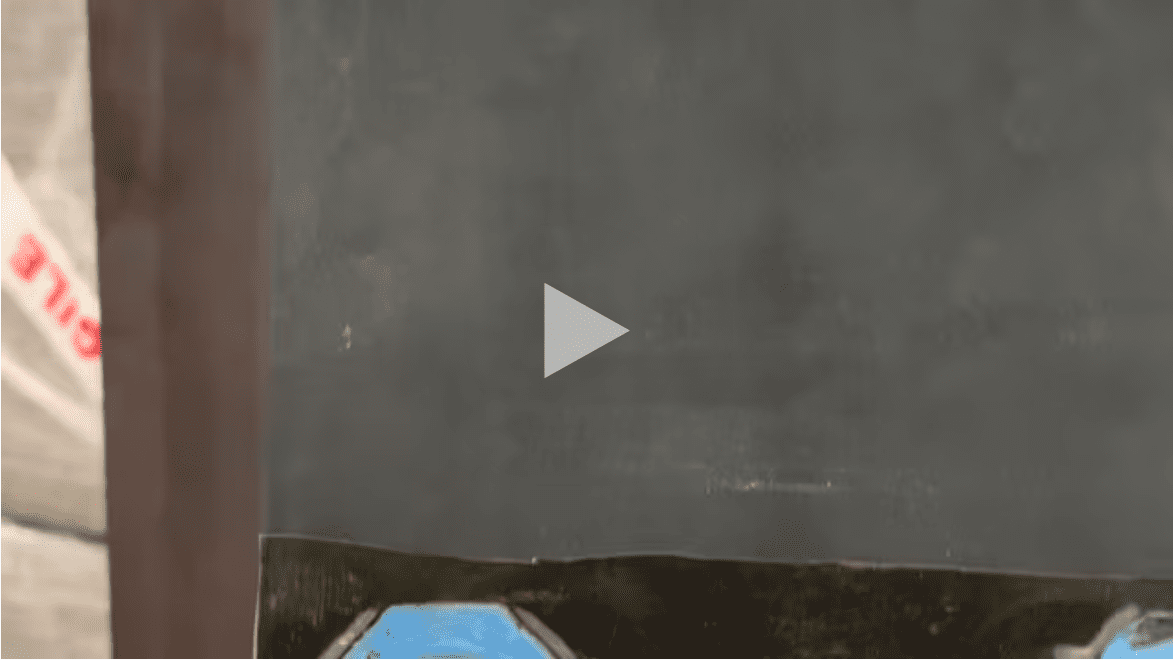Description

Application
Elastotec Slide Lagging is used in applications that require an easy installation and operation. Benefits include the application and removal of the lagging without removing the drum from the conveyor system and no need to sandblast pulley shell before application, Slide lagging products are recommended for the mining, quarry, grain and cement industries.
Slide lagging kits are supplied pre-cut to pulley size for fast and easy installation.
Key features and benefits
- Available in a range of rubber and ceramic options.
- Supplied in kits to suit custom pulley diameters and face widths for easy installation.
- Easy installation and quick replacement without removing the pulley.
- Available with crowned end pieces to assist with belt tracking
- High quality steel plates formed at the factory to fit the curved surface for each individual pulley diameter.
- Rust resistant metal retainers permanently welded or bolted to the pulley shell to secure the lagging pads in place. Products are colour coded to easily identify the rubber compound.

Elastotec Slide Lagging steel plates are 135mm wide to ensure easy handling and application and it is 15mm thick. Slide Lagging pads are available in 1687mm length as standard but complete installation packages cut to size can be supplied. Pads are shaped to meet each pulley diameter. Designed for direct application to the pulley. The plates slide in and out of special retainers which are securely welded to the pulley shell.



Design
Elastotec Slide Lagging has specially designed elastomers moulded under high pressure to heavy duty steel plates, which are shaped and cut to fit each pulley diameter and face. The plates slide in and out of steel retainers which are welded to the pulley shell.
There are multiple designs for both rubber and ceramic slide lagging, all moulded under pressure to the steel plates to ensure no separation between the steel and the compound. Elastotec Slide Lagging steel plates are 135mm wide to ensure easy handling, with 5mm of exposed steel at each side to slide between the retainers. Rubber Slide Lagging is 15mm thick and Ceramic Slide Lagging is 18mm thick. Pad length is 1687mm and can be cut and bent to suit the pulley size.

Premium finish
Steel backing plate
Coloured logo
Elastotec 100% rubber tear bonding system
Coloured logo
Rubber Specifications
| NAT | FRAS | OIL RESISTANCE | EXTREME | EPDM | |
|---|---|---|---|---|---|
| Polymer | SBR/Natural | Blend | Polychloroprene | Proprietary blend | EPDM |
| Tensile strength (MPa) min ISO37 | 20.0 | 18.0 | 17.0 | 16.0 | 10.0 |
| Elongation min ISO37 | 550% | 500% | 500% | 500% | 350% |
| Hardness (shore A) ISO868 | 65+/-5 | 65+/-5 | 65+/-5 | 60+/-5 | 70+/-5 |
| Abrasion resistance max vol. loss ISO 4649 method A (non-rotating) | 70mm3 | 150mm3 | 140mm3 | 29mm3 | 140mm3 |
| Heat Ageing: Tensile Strength (TS) Elongation (EL) Hardness (HD) | TS +3% EL -15% HD +2 points | TS +3% EL -6% HD +2 points | TS +5% EL -1% HD +3 points | TS +1% EL +2% HD +3 points | TS +5% EL -1% HD +3 points |
| Continuous Operating Temperature | -40/+70°C | -40/+70°C | -40/+120°C | -40/+70°C | -40/+150°C |
| Logo Colour Coding |
Ceramic Specifications
| Aluminium oxide | 96% |
| Specific gravity g/cm3 | 3.7 |
| Vickers hardness HV (10) | 1000 plus |
| Flexural strength (Mpa) | 300 |
| Compressive strength (Mpa) | 1800 |
| Fracture Toughness (Mpa m1/2) | 3.5 |

Ordering Slide Lagging for a specific pulley size
Slide lagging is inventoried in standard factory produced lengths to minimise stock keeping. There are two ways of applying slide lagging and this will affect the way it should be ordered.
1. The butt seam method
This method is designed to be the most economic option. Pads are cut to fit the pulley face width and the remaining ends of each cut pad are used butted together. Some pad rows are provided with full face width pads and some are provided with pad sections that make up the full face width.
Use the 1687mm pads to make up the pieces for the different rows. Pieces shorter than 100mm should be discarded. The number of 1687mm pads required for butt seam application for most common pulley diameters can be obtained from the table below or use the formula presented.

EXAMPLE PULLEY DIAMETER 600MM
FACE WIDTH 1000MM
- Multiply the pulley diameter by 3.14 and divide this by 160mm (135mm pad width + 25mm allowance for retainer) Diam mm x 3.14 / 160 mm.
Round down to the closest whole number.
Example
Pulley 600mm diam (600mm x 3.14) / 160mm = 11 rows. - Multiply the number of rows of pads by the pulley face width Number of pads
x pulley face width (mm)
Example
Pulley 1000mm face width 11 x 1000mm = 11000mm - Divide by 1687mm to determine the quantity of full length pads needed.
Round up to the next full length.
Total length required (mm) / Pad length (mm)
Example
pulley 1000mm / 1687mm = 6.5 pads or 7 full length pads required.
2. The full width method
This method provides no vertical butt seams. Each pad row is provided with full face width pads that have no butt seams.
When no butt seams are desired, the number of full length pads required will depend entirely on the pulley size and the quantity of face width pad lengths that can be cut from one standard length pad.
The number of 1687mm pads required for full width method application for most common pulley diameters can be obtained from the table below or use the formula presented.

EXAMPLE PULLEY DIAMETER 600MM
FACE WIDTH 1000MM
- Multiply the pulley diameter by 3.14 and divide this by 160mm (135mm pad width + 25mm allowance for retainer)
Diam mm x 3.14 / 160mm.
Round down to the closest whole number.
Example
pulley 600mm diam (600mm x 3.14) / 160mm = 11 rows.
- Calculate how many full width sections you can get from a standard size pad. Divide the standard pad length by the pulley face width.
1687mm / 1000mm = 1.7
Round down to the closest whole number.
This means that you cannot get more than 1 full row length pad from each standard pad. Divide the amount of rows by the amount of full widths you can get out of one pad.
Example
pulley 11 / 1 = 11 full length pads required.
Specifications – Rubber Slide Lagging
RUBBER SLIDE LAGGING – NATURAL
| PRODUCT | CODE | WIDTH | THICKNESS | LENGTH | WEIGHT/pad |
|---|---|---|---|---|---|
| Slide Lagging Rubber NAT | ELA-SLIDE- RL-DIA-SAR-15-1687 | 135mm | 15mm | 1687mm | - |
RUBBER SLIDE LAGGING – FRAS
| PRODUCT | CODE | WIDTH | THICKNESS | LENGTH | WEIGHT/pad |
|---|---|---|---|---|---|
| Slide Lagging Rubber FRAS | ELA-SLIDE- RL-DIA-SAR-15-1687 | 135mm | 15mm | 1687mm | - |
RUBBER SLIDE LAGGING – OIL RESISTANT
| PRODUCT | CODE | WIDTH | THICKNESS | LENGTH | WEIGHT/pad |
|---|---|---|---|---|---|
| Diamond Rubber FOR | ELA-SLIDE-DIA-FOR-15-1687 | 135mm | 15mm | 1687mm | - |
RUBBER SLIDE LAGGING – EXTREME
| PRODUCT | CODE | WIDTH | THICKNESS | LENGTH | WEIGHT/pad |
|---|---|---|---|---|---|
| Diamond Rubber EXT | ELA-SLIDE-DIA-EXT-15-1687 | 135mm | 15mm | 1687mm | - |
RUBBER SLIDE LAGGING – EDPM
| PRODUCT | CODE | WIDTH | THICKNESS | LENGTH | WEIGHT/pad |
|---|---|---|---|---|---|
| Diamond Rubber EPDM | ELA-SLIDE-DIA-EPDM-15-1687 | 135mm | 15mm | 1687mm | - |


Specifications – Ceramic Slide Lagging
CERAMIC SLIDE LAGGING – NATURAL
| PRODUCT | CODE | WIDTH | THICKNESS | LENGTH | WEIGHT/pad |
|---|---|---|---|---|---|
| Ceramic DRIVE | ELA-SLIDE- SRC-N-18K-SQ-01687 | 135mm | 17mm | 1687mm | - |
| Ceramic NON DRIVE | ELA-SLIDE- SRC-N-18P-SQ-01687 | 135mm | 17mm | 1687mm | - |
CERAMIC SLIDE LAGGING – FRAS
| PRODUCT | CODE | WIDTH | THICKNESS | LENGTH | WEIGHT/pad |
|---|---|---|---|---|---|
| Ceramic DRIVE | ELA-SLIDE-SRC-F-18K-SQ-01687 | 135mm | 17mm | 1687mm | - |
| Ceramic NON DRIVE | ELA-SLIDE-SRC-F-18P-SQ-01687 | 135mm | 17mm | 1687mm | - |
CERAMIC SLIDE LAGGING – OIL RESISTANT
| PRODUCT | CODE | WIDTH | THICKNESS | LENGTH | WEIGHT/pad |
|---|---|---|---|---|---|
| Ceramic DRIVE | ELA-SLIDE-SRC-FOR-18K-SQ-01687 | 135mm | 17mm | 1687mm | - |
| Ceramic NON DRIVE | ELA-SLIDE-SRC-FOR-18P-SQ-01687 | 135mm | 17mm | 1687mm | - |


Thickness variation (all pads/pulley) +/-0.5mm











